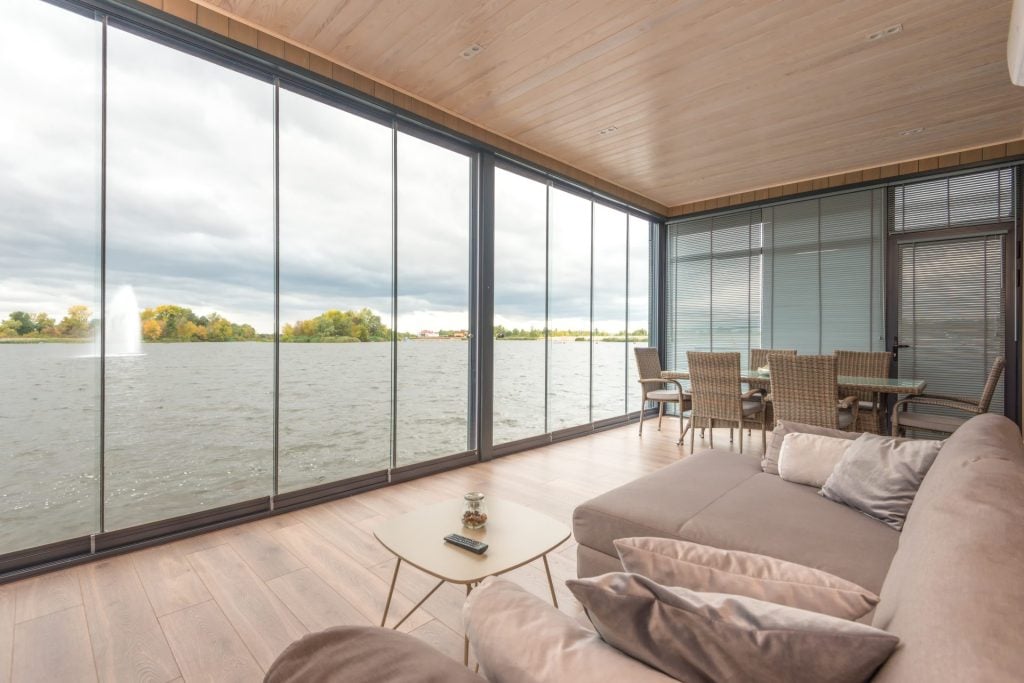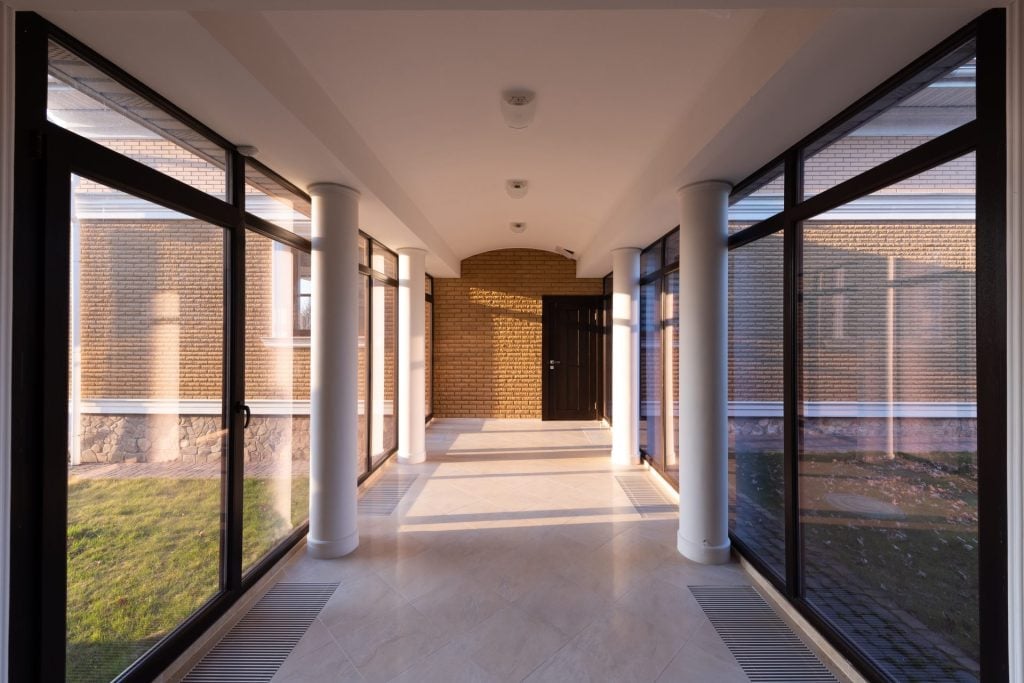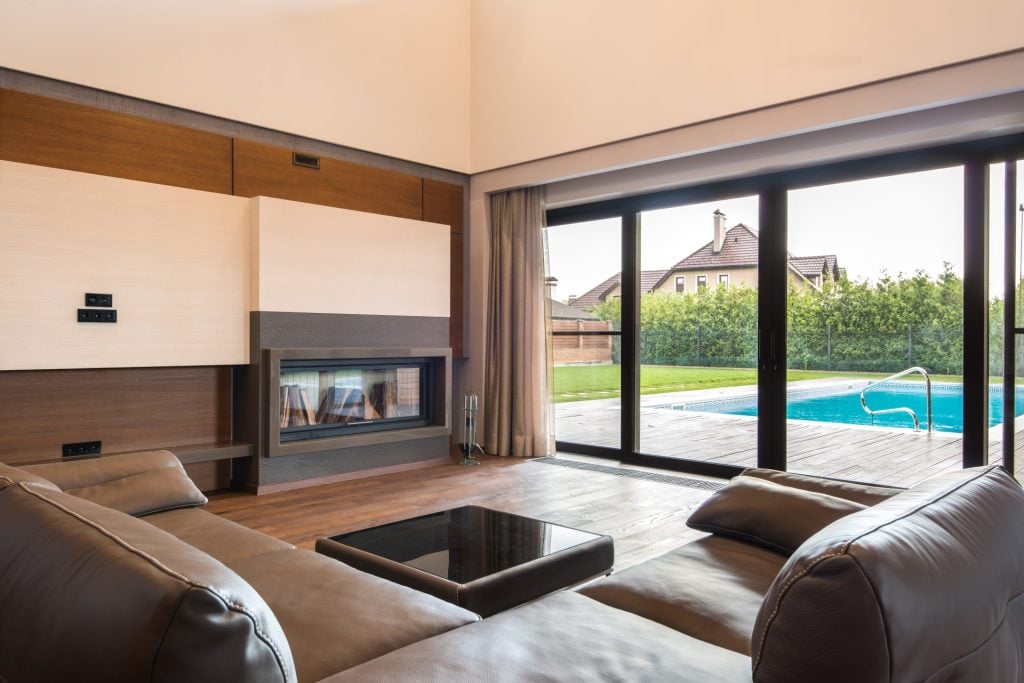BLOGS
Philippine Infrastructure: Electrochromic Glass
Technological progress is unstoppable. It intrudes our lives from the most pressing to our least pressing necessities. From smartphones to smart houses, we are now being introduced to smart glass, known as “electrochromic glass.”
Electrochromic glass is a type of smart glass that can change its tint or opacity in response to an electric current. This glass technology is becoming increasingly popular in modern buildings and homes because it provides a range of benefits, including energy savings, improved comfort, and enhanced privacy.
Continue reading to learn more about this wonderful cutting-edge technology, which is quickly gaining favor in various settings, including offices, businesses, schools, and hospitals, due to its numerous advantages.

How do electrochromic (smart glass) windows work?
The glass has several layers, including a conductive layer, electrochromic layers, and ion conductors. When a voltage is applied to the conductive layer, ions move between the layers, causing the electrochromic layers to change from transparent to tinted or opaque.
There are two main types of electrochromic windows: passive and active. Passive electrochromic windows use natural light and heat to trigger the tinting process, while active electrochromic windows require an electric current to be applied manually or through a control system.
In active electrochromic windows, the level of tint or opacity can be controlled through various methods, such as a switch, remote control, or building automation system. This allows the user to adjust the amount of light and heat entering the building, providing greater control over the building’s energy consumption and the comfort of its occupants

Different types of electrochromic glass
There are different types of electrochromic glass, each with its own characteristics and applications. Here are some of the common types of electrochromic glass:
- Polymer dispersed liquid crystal (PDLC) – This type of electrochromic glass is made by dispersing tiny droplets of liquid crystal in a polymer matrix. When a voltage is applied, the droplets align, creating a clear or tinted effect. PDLC glass is commonly used in privacy glass applications.
- Suspended particle device (SPD) – This type of glass contains tiny particles suspended in a liquid or film. When a voltage is applied, the particles align and block out light, creating a tinted effect. SPD glass is commonly used in windows and skylights.
- Electrochromic glazing – This type of electrochromic glass contains multiple layers of materials that respond to an electric current. When a voltage is applied, ions move between the layers, causing the glass to change from clear to tinted or opaque. Electrochromic glazing is commonly used in windows, skylights, and partitions.
- Photochromic glass – This type of glass uses a different technology than electrochromic glass, but it also has the ability to change the tint in response to light. The photochromic glass contains special materials that darken in response to UV light, reducing glare and saving energy. It is commonly used in sunglasses and transition lenses for eyeglasses.
Do we need Electrochromic Glass?
Electrochromic glass is not a necessity, but it can provide several benefits for homes and buildings.
One of the primary advantages of electrochromic glass is its ability to improve energy efficiency. By blocking out excess sunlight and heat, the glass can reduce the need for air conditioning and heating systems, leading to lower energy consumption and costs. This is particularly important in regions with hot and humid climates where air conditioning is used frequently.
Moreover, electrochromic glass can improve the comfort of occupants in a building. It can block out glare and reduce the amount of visible light entering a room, creating a more comfortable environment for those inside. This can be especially important in workplaces or residential buildings where people spend a lot of time indoors.

Another advantage of electrochromic glass is that it can provide enhanced privacy without the need for curtains or blinds. By adjusting the level of tint or opacity, users can create a more private space without obstructing the view.
While electrochromic glass is more expensive than traditional glass, the long-term energy savings and improved comfort make it a worthwhile investment for those looking to improve the energy their homes’ or buildings’ energy efficiency and functionality, while it may not be a necessity, electrochromic glass is a useful and valuable addition to modern and sustainable homes and buildings.
How Installing Smart Glass in Your Home Can Be Beneficial for You and Your Family
Since a growing number of homeowners would rather invest in a home improvement project, Switchable Glass is quickly becoming a highly on-demand after-product.
And if you’re searching for a family-friendly community and the classic elegance of Italian-style homes in which electrochromic windows will match its overall beauty and efficiency, find your place on one of the Luxury Lots in Daang Hari.
With a smart glass made of cutting-edge technology, experience an understated elegant design. You can choose from a selection of double-paned, switchable glass features warm-edge spacers, low-E and low-iron coatings, and argon fill, all of which contribute to excellent insulation against heat loss, UV light, and sound transmission.
- Improved energy efficiency: Smart glass can help to reduce energy consumption by blocking out excess sunlight and heat. This can lead to lower energy bills and a smaller carbon footprint, making your home more environmentally friendly.
- Increased comfort: Smart glass can improve the comfort of your home by reducing glare, blocking out UV rays, and regulating the temperature. This can create a more pleasant and relaxing environment for you and your family.
- Enhanced privacy: Smart glass can provide privacy without needing curtains or blinds. By adjusting the level of tint or opacity, you can create a more private space without obstructing the view.
- Improved security: Smart glass can provide added security for your home by making it more difficult for intruders to see inside. It can also be programmed to respond to security systems and alarms, providing an added layer of protection.
- Better aesthetics: Smart glass can add a modern and stylish touch to your home, enhancing its overall appearance and value.
- Reduced maintenance: Smart glass requires less maintenance than traditional glass, as it does not require cleaning or replacement as frequently.
Where to install electrochromic windows at home?

Electrochromic windows can be installed in any part of the house where the amount of natural light and privacy are important considerations. They can provide numerous benefits for your comfort, energy efficiency, and security, making them a worthwhile investment for any homeowner.
Living room: Electrochromic windows can be installed in the living room to control the amount of natural light entering the space, reducing glare and regulating temperature.

Bedroom: Electrochromic windows can be installed in the bedroom to provide privacy without obstructing the view. They can also be programmed to block out early morning sunlight, allowing for a more restful sleep.
Kitchen: Electrochromic windows can be installed to regulate the temperature and reduce heat buildup from cooking. They can also provide a clear view of the outdoors while blocking out excess sunlight.
Bathroom: Electrochromic windows can be installed in the bathroom to provide privacy without the need for curtains or blinds. They can also be programmed to block out sunlight to reduce heat buildup and prevent fading of materials.
Home office: Electrochromic windows can be installed in the home office to reduce glare and regulate the temperature, providing a more comfortable and productive workspace.
In general, electrochromic windows can be installed in any room of the house where controlling the amount of natural light that enters the room and maintaining a certain level of privacy is a priority.
Because of the numerous benefits, they can provide for your convenience, energy efficiency, and safety, they are an investment worthwhile for any homeowner.

















